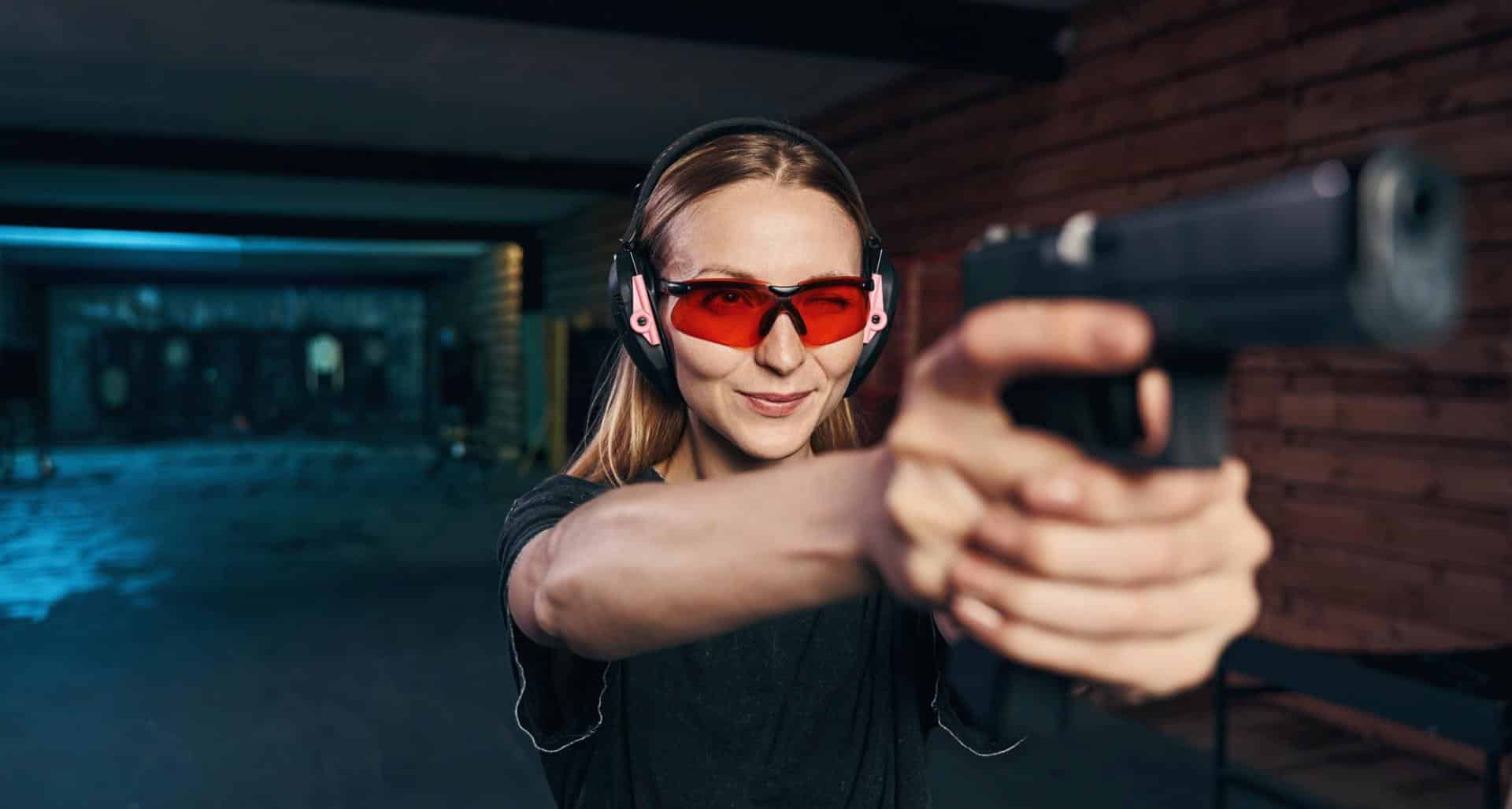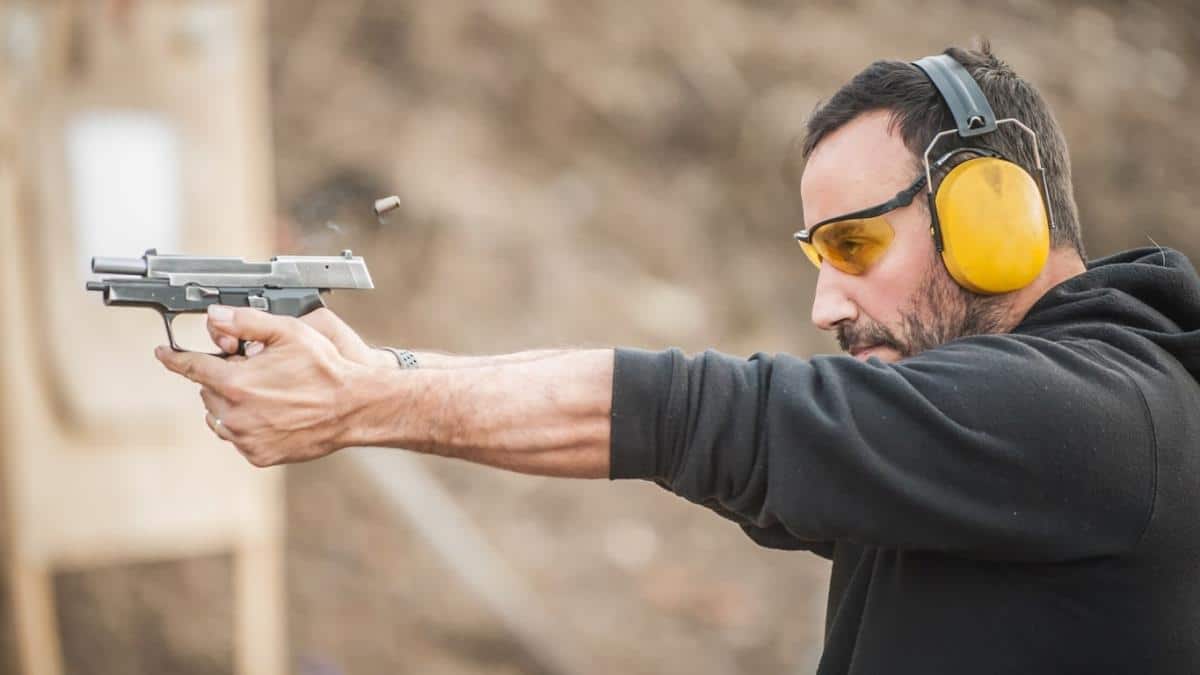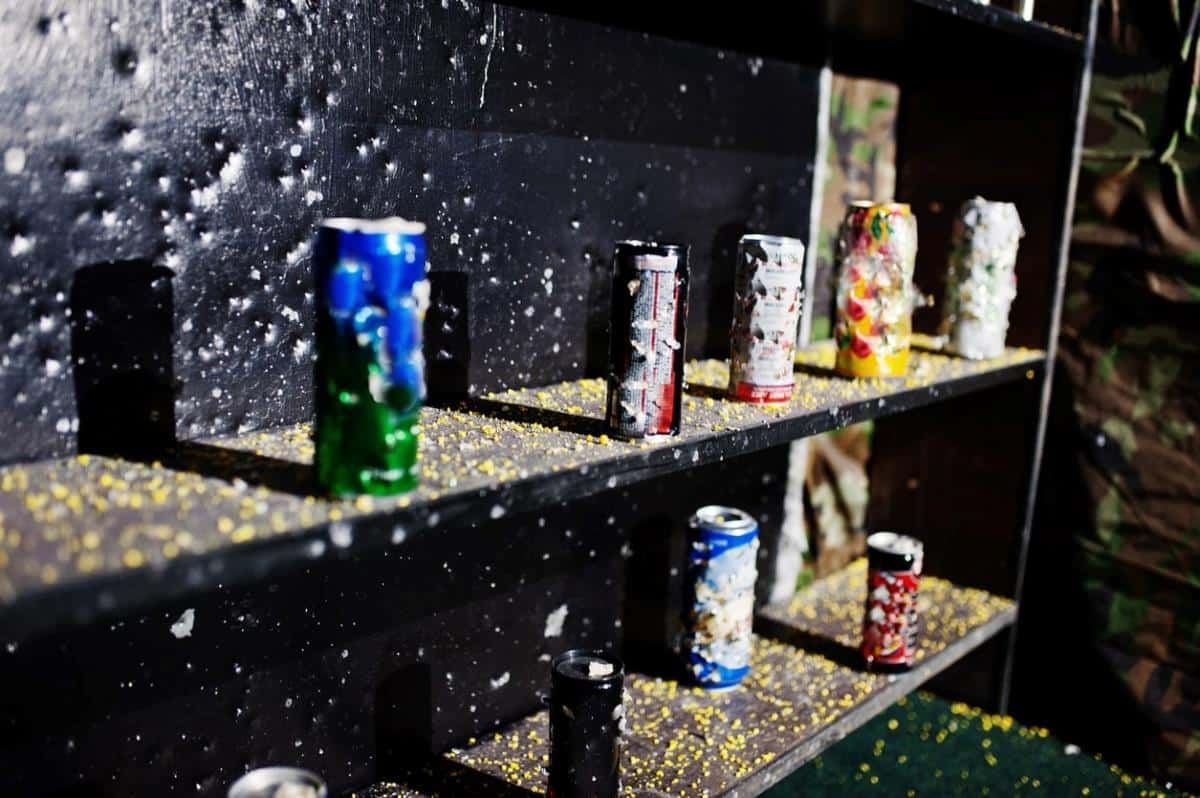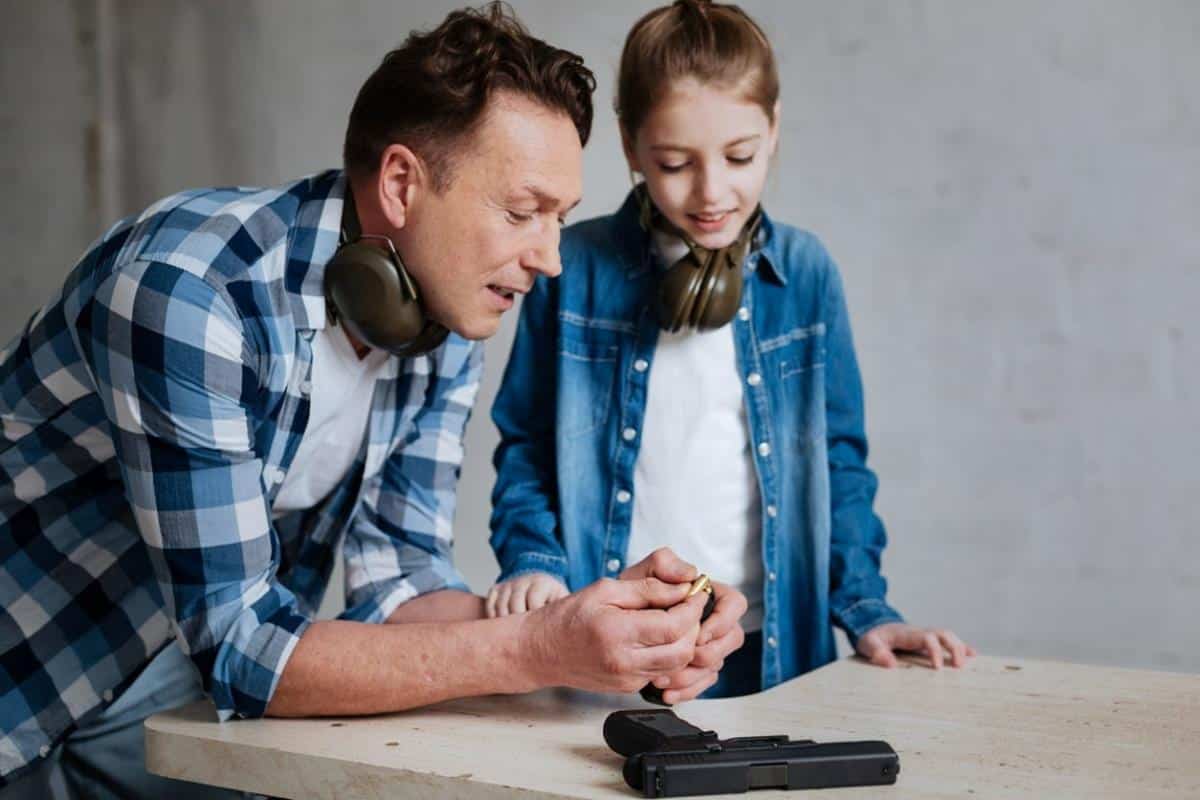Your cart is currently empty!

What is Plinking?
Plinking is the act of shooting at an object, not necessarily a target. Tin cans, glass bottles, and other forms of informal targets are all involved in the “art” of plinking. This blog discusses plinking and the differences between it and target practice along with some dialog on bullet options, safety reasons, and different types of targets including the standard steel target.
What is Plinking?

Plinking is the pure joy of shooting at an informal target, such as plinking tin cans off a fence post or stump. The types of guns used in plinking range from a BB gun to AK47s. Plinking is not the same as target practice, but the two are very much akin to each other.
What is the Difference Between Target Shooting and Plinking?
Target shooting, or target practice, involves rules since this is a term that applies to competitive shooting, range shooting, and other shooting events that have a more thoughtful approach to the end result of each shot. The “practice” in target practice implies that the shooter is “aiming” to get better – to improve their shooting technique and the result of each shot. Plinking, on the other hand, is not technical or rule-driven. You simply shot soda cans off the fence post. In target shooting, you would use a paper target or steel target.
As mentioned, the two – plinking and target practice – are similar. The greatest difference is that plinking has no real rules other than those for safety. Target practice may have a time limit, distance from, or other stipulation between the shooter and the target. In plinking, you just set up the soda can and plink it right off the post.
What are the Advantages of Plinking?

The biggest benefit of plinking is to either get you in the practice of shooting or to keep you in the practice of shooting. Once you are able to shoot somewhat accurately, you can target practice to improve the technique of shooting and your shot accuracy.
Stress-free – Plinking offers a stress-free and fun way to practice shooting. It is the foundation steps on which you build solid accuracy and improve your shooting technique. Kids, with adult supervision, can plink at home with a BB gun. As they grow older, they may move up to small caliber guns, such as a .22. Plinking is also a good way for a new shooter to experience the fun and thrill of shooting at a target. Because there are no rules other than safety rules, there is little stress or pressure, just that metallic sound of the plink as you hit the soda can.
What Calibers Are Best for Plinking?
.22 Caliber – One of the best caliber choices for plinking is the .22 rimfire. You can shoot with a .22 handgun or a long rifle. As a cheaper ammo, the .22 is perfect for plinking.
.38 Special – For a heavier plink, the .38 special is popular. The downside is that the ammo is more expensive than the .22 round, but you can also take it to the shooting range, use it for self-defense, or enjoy the higher energy plinking target after target.
9mm – Similar to the .38 special in terms of cost, the 9mm round is very versatile as a plinking option and also has many other usages including home defense, self-defense, or target shooting at the range.
.223/5.56 NATO – in an AR-15, the .223/5.56 NATO is an option for long-range plinking and a good way to get to know your AR. You can also use plinking to dial in your scope such as parallax adjustments.
Air Guns .177 or .22 -If you are an air gun hobbyist, you can plink with the .177 or .22 calibers. The airsoft gun makes a good example as a plinking option.
The larger calibers such as .308 and .50 are also used for plinking. The cost per round is much higher, even if you reload, but these give you the option for long-range with a lot of impact. In the end, it’s really up to you to choose which caliber you want to use.
Safety is always a rule for all forms of plinking and target practice.
Tips for Plinking Safety

afety applies to an air pistol, handgun, rifle, semi-automatic, or any other type of firearm you may choose to use for plinking.
1.Safety is always the top practice and thought while you hold any weapon. Make your safety list a mandatory part of every shooting event, whether you are plinking or target practicing.
2.While not aiming, the barrel is always pointed at the ground and away from anyone. Also, be wary of what is on the ground as ricocheting rounds can be just as dangerous.
3.Keep guns unloaded unless you are preparing to plink or shoot. Never drive with a gun that is loaded. Never walk with a gun that is loaded unless you are hunting. Check your gun before you leave home, and once you reach your plinking area.
4.Use the safety, but do not rely on it to prevent a gun from accidentally firing. Mechanical features can fail, and gun safeties are mechanical.
5.Know what is beyond your target. Bullets can travel for miles. Always plink with a solid backdrop that will stop a round. A dirt bank or hill is an example of a good background for plinking.
6.Do not use questionable ammo, even for a makeshift target. Use only undamaged and quality ammo. If the ammo is damaged or pitted, discard it and do not fire it.
7.Know how to handle a misfire when the round does not fire. Carefully unload the round and discard it. Never travel home with a round in the gun that has misfired.
8.Personal Protective Gear – earplugs and eye protection are a must. The short-term and long-term effects of shooting are physical damage to your hearing and any type of accident can occur to your eyes.
9.Check your gun before heading out to plink. Inspect the barrel, moving parts, hammer, etc.
10.Clean and maintain your gun on a schedule and keep your firearm in good repair. Never fire a dirty gun. Part of the cleaning process is to ensure that all moving parts are working as intended.
11.Plinking is just as much about learning the finer details of your weapon. Take that time to learn how your gun works and then safely use the gun to plink.
12.Plinking should follow strict safety rules such as those you would encounter at a range.
Berry’s Offers Bullets That Are Great for Plinking
With plated bullets, like what Berry’s offers, you have a cost-efficient round with no leading. This means that you have the perfect plinking round. Make no mistake, plinking rounds are the same as rounds you would use for target practice, home defense, and even hunting. Berry’s offers some of the best calibers of bullets around for plinking or any other shooting event.
Grain Weight – Berry’s offers most bullets in a range of grains so that you can build the perfect round. We also offer a variety of nose styles so that you can become familiar with how the bullets behave while plinking or target shooting. Take our 9mm bullets for example:
9mm Bullet Stats – grains range from 100 gr to 147 gr with ample options for shape including hollow point, target hollow point, round nose, and flat nose. Other options include a hollow base – hollow point, etc.
The options allow you to choose a bullet that ranges from lightweight to heavy so that you are controlling the velocity and energy as you self-load your rounds. If you want a light punch, go with a light grain. These will be a little stronger than a pellet gun, but even air rifles can launch heavy grain high caliber rounds.
The vast variety offered by Berry’s means that you can choose ammo for close-range or distance shots and rounds that are appropriate for metal target plinking or paper targets. Regardless of the bullets you choose, they are the same quality and precision as the bullets you would take to the gun range or stock at home for home defense or self-defense.
The Berry’s Difference
Berry’s has offered exacting standards for bullets since 1961. As a fourth-generation family-run business, Berry’s has a deep connection to the shooting community that they serve. We understand the challenges of gun laws and restrictions and the frustrations that gun owners have trying to find quality ammo. That is why Berry’s offers all of the tools, equipment, and supplies that you need to self-load your own rounds.
As a manufacturing facility, Berry’s has 100 percent control over the specifications of every bullet we produce. With their long history and deep connection to their community, Berry’s remains a consistent manufacturer of quality bullets produced to exacting standards.
Whether you are looking for bullets for informal shooting, home defense, self-defense, hunting, or at the target range, you can rely on the quality that Berry’s puts into every bullet they sell.
Check out our complete bullet and self-loading options today!
